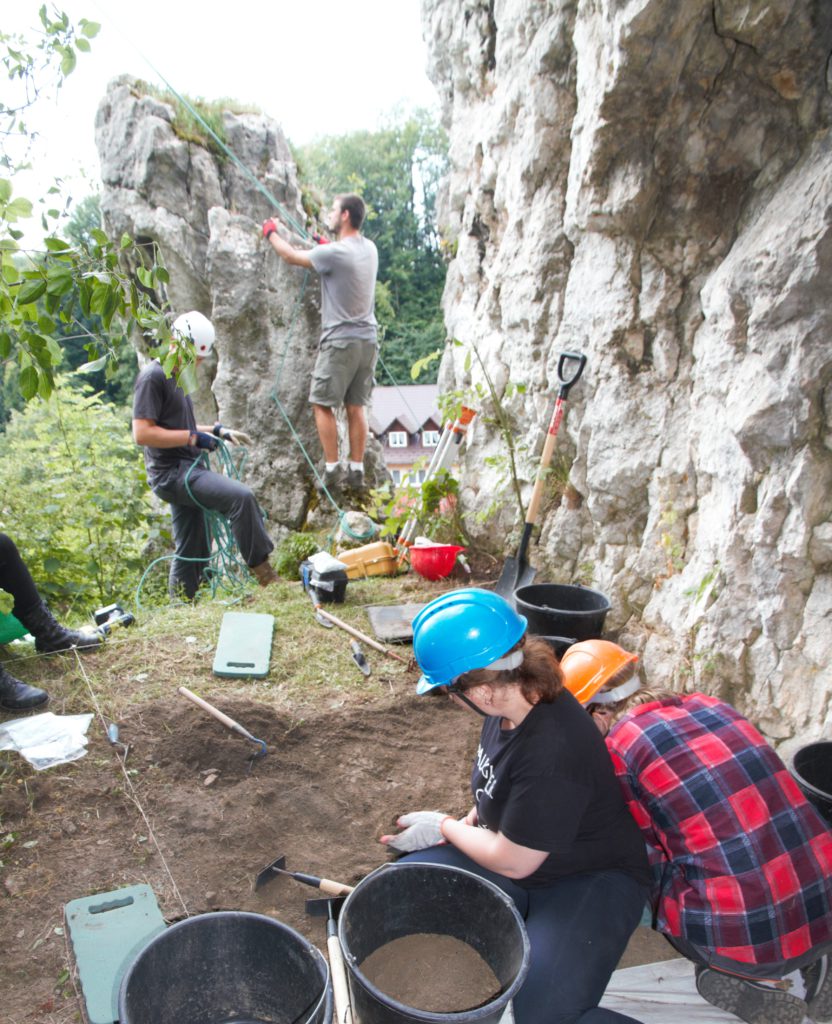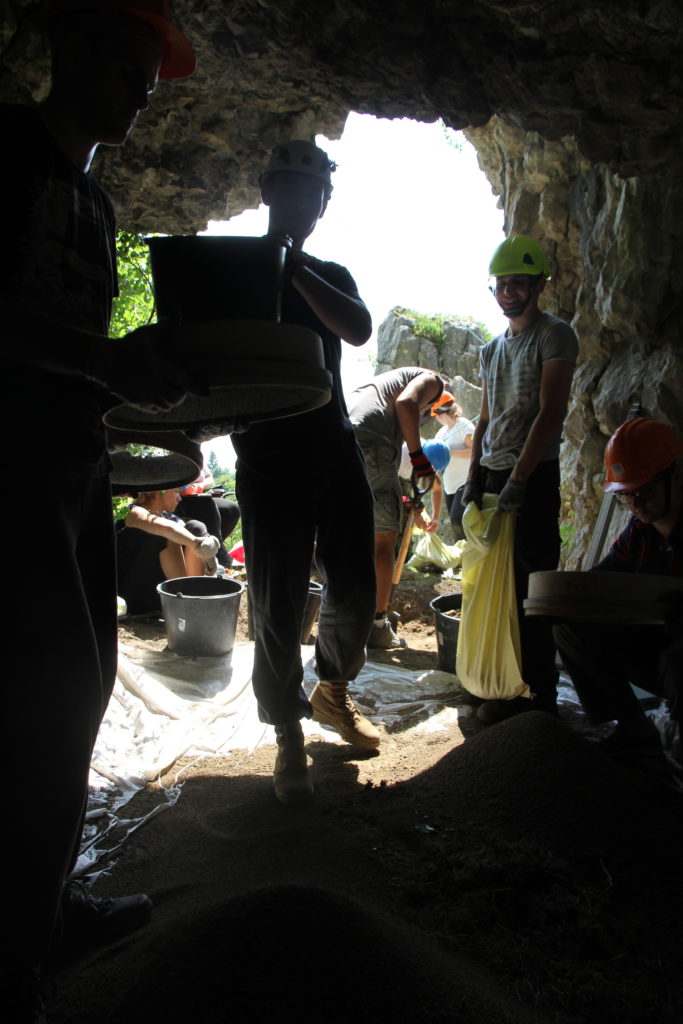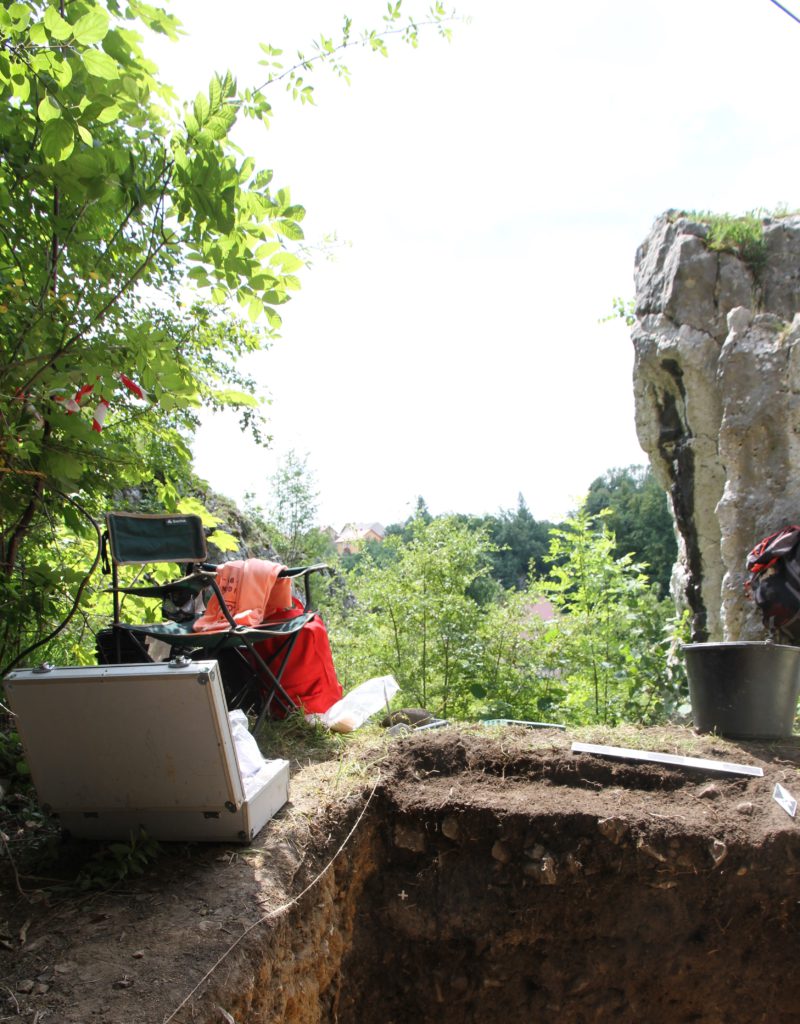Excavations in 2018 we started from cave located at the mouth of Sąspowska Valley, Sąspowska Zachodnia Cave, called also pod Kościołem Zachodnia Cave (which literally means under the church west cave . Cave is located in the village Sąspów. Similar to the last seasons in our work participated students from University of Warsaw, supervised by PhD Małgorzata Kot.

Methods used in previous seasons of excavations proved to be accurate and efficient so this time work progressed much quicker, as we did everything according to fixed scheme. We started with building construction for flotation and ropeway for transporting buckets with bags filled with soil. It was necessary since Sąspowska Zachodnia Cave is located few dozens metres above the bottom of the cave, and path leading to it is steep, grassy and rather slippery.
We’ve opened a trench near the entrance and we’ve expected to find here intact profile. We started exploration from the corner of the old trench and uncovered profile from prof. Waldemar Chmielewski excavations. As we did the year before, we put all the soil in the bags, transported them down with the ropeway and then by car to our base. There we flotated, dried and then searched through samples.

We haven’t explored only mound from old trench, we also opened a small trench in situ. Artifacts from old excavations are unfortunately lost so it was crucial for us to find at least some artifacts in its original layers. Results of excavation really surprised us! Despite small trench in situ we found over 2 thousand flint artifacts, mostly from one layer. The were documented in three dimensions.

Settlement in Sąspowska Zachodnia Cave, according to Waldemar Chmielewski, should be dated to neolithic times. Flint mines that are nearby are also neolithic. More about cultural traditions of people living in this cave and their connection to flint mines we’ll be able to tell after we do specialized analyzes.






